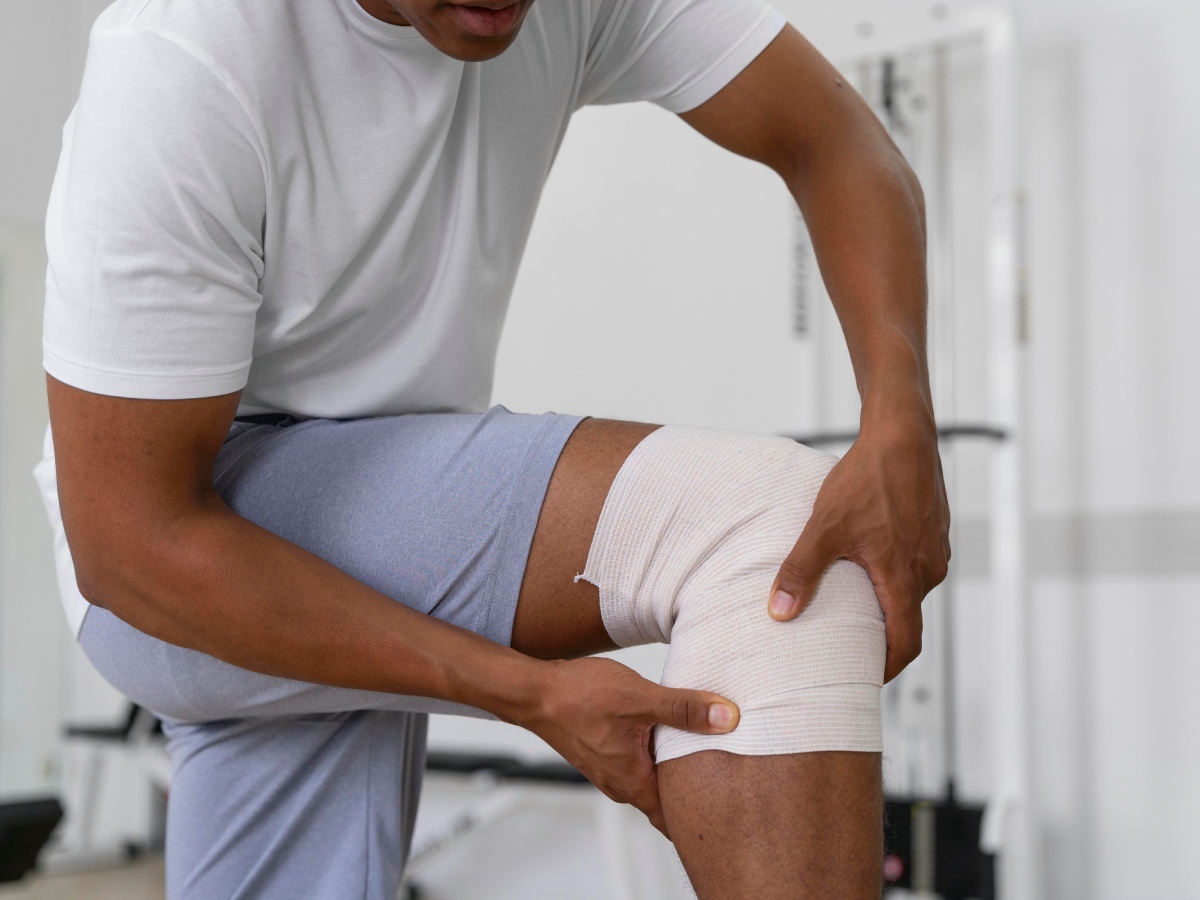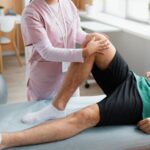Introduction
Knee replacement surgery is a medical procedure designed to relieve chronic knee pain and restore mobility by replacing damaged knee joints with artificial implants. It is commonly recommended for individuals suffering from severe arthritis, injury-related damage, or degenerative joint conditions. The surgery has become increasingly popular due to advancements in medical technology, longer life expectancy, and the desire for active, pain-free lifestyles among aging populations.
However, undergoing the surgery is just the first step toward reclaiming mobility and comfort. Post-surgery care plays a crucial role in ensuring a successful recovery. Many patients unknowingly make mistakes that can hinder their healing process. In this article, we’ll discuss the Top 5 Mistakes After Knee Replacement and share expert recovery Knee replacement success tips to help you achieve the best possible outcome. By avoiding these common pitfalls, you can speed up recovery, minimize complications, and enjoy a more active and fulfilling life.

Skipping Physical Therapy
One of the Top 5 Mistakes after knee replacement is skipping physical therapy. Many patients underestimate its importance, thinking that rest alone will promote healing. In reality, physical therapy is essential for regaining mobility, reducing stiffness, and ensuring a smoother recovery process.
Why It’s a Mistake:
After knee replacement surgery, your muscles and joints need to be retrained to function properly. Skipping therapy can result in limited range of motion, muscle weakness, and prolonged stiffness. These issues can delay recovery and potentially lead to long-term mobility problems.
What to Do Instead
(Knee replacement surgery recovery tips):
- Follow the Prescribed Therapy Schedule: Attend all physical therapy sessions as recommended by your healthcare provider. Consistency is key to seeing progress.
- Perform Exercises at Home: In addition to supervised therapy, practice prescribed exercises at home. This helps maintain strength, improve flexibility, and speed up the healing process.
Neglecting Pain Management
Among the Top 5 Mistakes after knee replacement, neglecting proper pain management is a common but serious issue. Many patients either avoid taking prescribed medications due to fear of side effects or assume that enduring pain is part of the healing process. However, uncontrolled pain can hinder recovery and negatively impact mobility.
Why It’s a Mistake:
Pain that isn’t managed effectively can make it difficult to perform essential post-surgery exercises, leading to joint stiffness and reduced range of motion. This can slow down the recovery process and even cause long-term complications such as chronic pain or impaired mobility.
What to Do Instead:
- Take Medications as Prescribed: Follow your doctor’s instructions regarding pain relievers and anti-inflammatory medications. Proper medication use helps control pain, allowing you to stay active during recovery.
- Use Ice Packs and Elevation to Reduce Swelling: Applying ice packs can help reduce swelling and numb the surgical area, providing natural pain relief. Elevating the leg also minimizes fluid buildup, promoting faster healing.

Overdoing Activities Too Soon
One of the Top 5 Mistakes after knee replacement is resuming physical activities too quickly. Many patients, eager to return to their normal routines, overestimate their recovery progress. While staying active is crucial, pushing your body beyond its limits can cause setbacks or even serious complications.
Why It’s a Mistake:
Engaging in strenuous activities too soon can strain the healing knee joint, leading to swelling, pain, and even damage to the surgical implant. Overexertion may slow down the recovery process, increase the risk of injury, and prolong the time required to regain full mobility.
What to Do Instead:
- Gradually Increase Activity Levels: Follow your doctor’s or physical therapist’s recommendations for safe activity progression. Begin with low-impact exercises such as walking or stationary cycling to build strength and flexibility.
- Avoid High-Impact Sports Until Fully Recovered: Activities like running, jumping, or contact sports should be avoided until your healthcare provider confirms you are fully healed. These actions can put undue stress on the knee joint, risking further injury.
Ignoring Warning Signs
Among the Top 5 Mistakes after knee replacement, ignoring warning signs is one of the most dangerous. Many patients dismiss early symptoms of potential complications, assuming they are normal parts of the recovery process. However, paying attention to your body’s signals can prevent serious health issues and ensure a smoother recovery.
Why It’s a Mistake:
Symptoms like persistent swelling, redness around the surgical site, unusual pain, or fever can indicate complications such as infections, blood clots, or implant problems. Ignoring these signs can lead to severe health risks, extended hospital stays, and even additional surgeries.
What to Do Instead:
- Contact Your Healthcare Provider if Unusual Symptoms Occur: If you notice anything abnormal, such as increased pain, warmth, or drainage from the incision site, seek medical advice immediately. Early intervention can prevent more serious issues.
- Attend Regular Follow-Up Appointments: Follow-up visits allow your healthcare provider to monitor your progress, detect potential complications early, and adjust your treatment plan if needed. These appointments are vital to ensure long-term recovery success.
Not Following a Healthy Lifestyle
Neglecting a healthy lifestyle is one of the Top 5 Mistakes after knee replacement that can significantly hinder recovery. Many patients believe that surgery alone will restore mobility, overlooking the importance of proper nutrition and regular exercise. However, maintaining a healthy lifestyle is crucial for long-term success.
Why It’s a Mistake:
A poor diet and lack of physical activity can lead to unwanted weight gain, putting extra stress on the newly replaced knee joint. This added pressure can cause joint pain, reduce mobility, and increase the risk of implant failure. Inactivity can also slow down muscle strengthening and delay overall recovery.
What to Do Instead:
- Maintain a Balanced Diet with Anti-Inflammatory Foods:
Eat a well-rounded diet rich in lean proteins, whole grains, fruits, and vegetables. Foods like berries, leafy greens, and fatty fish can reduce inflammation and promote healing. Stay hydrated and limit sugary and processed foods. - Engage in Low-Impact Exercises Like Swimming or Walking:
Low-impact activities help strengthen muscles without straining the knee. Walking, swimming, and cycling are excellent options for improving mobility and cardiovascular health. Follow your physical therapist’s guidance on exercise routines.
Conclusion
Recovering from knee replacement surgery requires more than just time—it demands consistent effort and informed decisions. Avoiding the Top 5 Mistakes after knee replacement, such as skipping physical therapy, neglecting pain management, overdoing activities, ignoring warning signs, and failing to maintain a healthy lifestyle, can make a significant difference in your recovery journey.
Following your healthcare provider’s post-surgery guidelines is essential for ensuring a smooth recovery and long-term joint health. Regular check-ups, a balanced diet, appropriate exercise, and attentive care can help you regain mobility and improve your quality of life.
Every patient’s recovery experience is unique, so it’s crucial to consult your healthcare provider for personalized advice. Being proactive and well-informed can prevent complications and lead to a more successful knee replacement outcome.
FAQs
1. How long does it take to recover fully from knee replacement surgery?
Recovery typically takes 3-6 months, with some patients needing up to a year for complete mobility restoration. Following post-surgery guidelines can speed up the process.
2. Can I exercise after knee replacement surgery?
Yes, but stick to low-impact exercises like walking, swimming, or cycling. Avoid high-impact sports unless cleared by your healthcare provider.
3. What foods should I eat after knee replacement surgery?
Focus on anti-inflammatory foods like leafy greens, fruits, lean proteins, whole grains, and healthy fats. Staying hydrated also aids recovery.
4. What are the signs of knee replacement complications?
Warning signs include persistent swelling, redness, fever, unusual pain, and fluid drainage from the incision site. Contact your healthcare provider if you notice any of these symptoms.
5. How important are follow-up appointments after surgery?
Follow-up visits help monitor your progress, detect issues early, and adjust your treatment plan as needed. They are vital for long-term success.
Also Read: Knee Pain When Bending: Causes, Prevention, and Treatment









